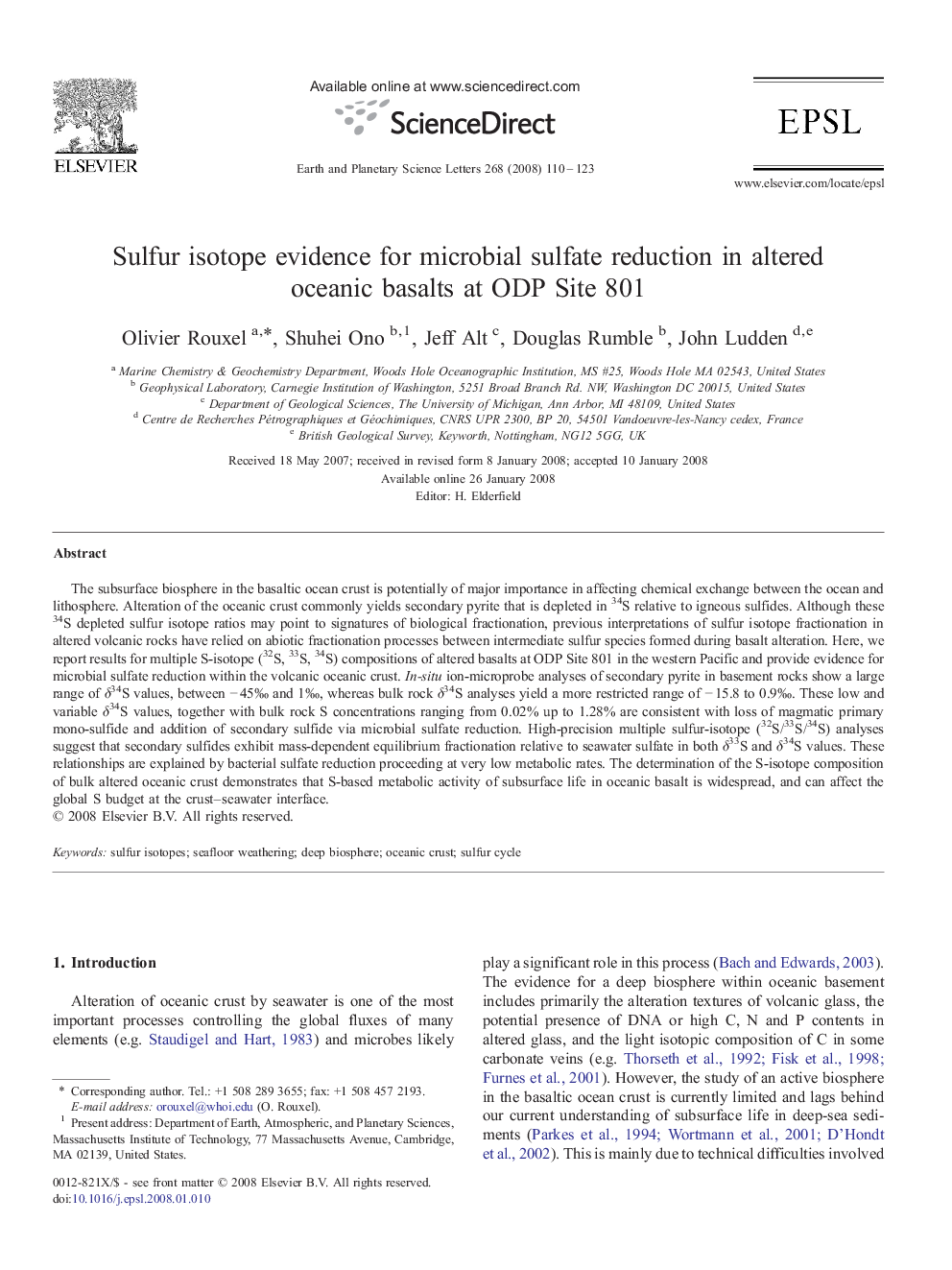| Article ID | Journal | Published Year | Pages | File Type |
|---|---|---|---|---|
| 4679751 | Earth and Planetary Science Letters | 2008 | 14 Pages |
The subsurface biosphere in the basaltic ocean crust is potentially of major importance in affecting chemical exchange between the ocean and lithosphere. Alteration of the oceanic crust commonly yields secondary pyrite that is depleted in 34S relative to igneous sulfides. Although these 34S depleted sulfur isotope ratios may point to signatures of biological fractionation, previous interpretations of sulfur isotope fractionation in altered volcanic rocks have relied on abiotic fractionation processes between intermediate sulfur species formed during basalt alteration. Here, we report results for multiple S-isotope (32S, 33S, 34S) compositions of altered basalts at ODP Site 801 in the western Pacific and provide evidence for microbial sulfate reduction within the volcanic oceanic crust. In-situ ion-microprobe analyses of secondary pyrite in basement rocks show a large range of δ34S values, between − 45‰ and 1‰, whereas bulk rock δ34S analyses yield a more restricted range of − 15.8 to 0.9‰. These low and variable δ34S values, together with bulk rock S concentrations ranging from 0.02% up to 1.28% are consistent with loss of magmatic primary mono-sulfide and addition of secondary sulfide via microbial sulfate reduction. High-precision multiple sulfur-isotope (32S/33S/34S) analyses suggest that secondary sulfides exhibit mass-dependent equilibrium fractionation relative to seawater sulfate in both δ33S and δ34S values. These relationships are explained by bacterial sulfate reduction proceeding at very low metabolic rates. The determination of the S-isotope composition of bulk altered oceanic crust demonstrates that S-based metabolic activity of subsurface life in oceanic basalt is widespread, and can affect the global S budget at the crust–seawater interface.
